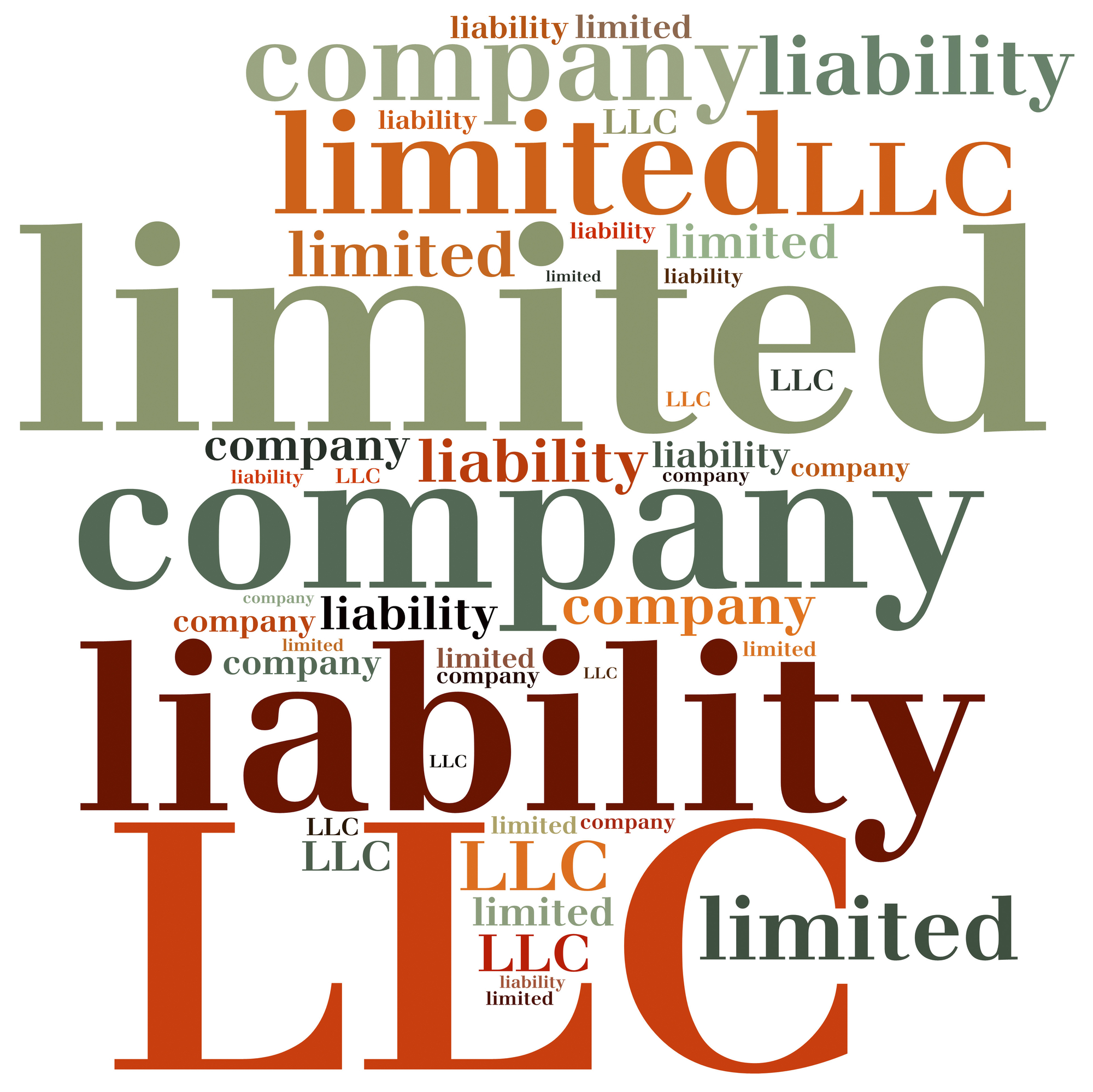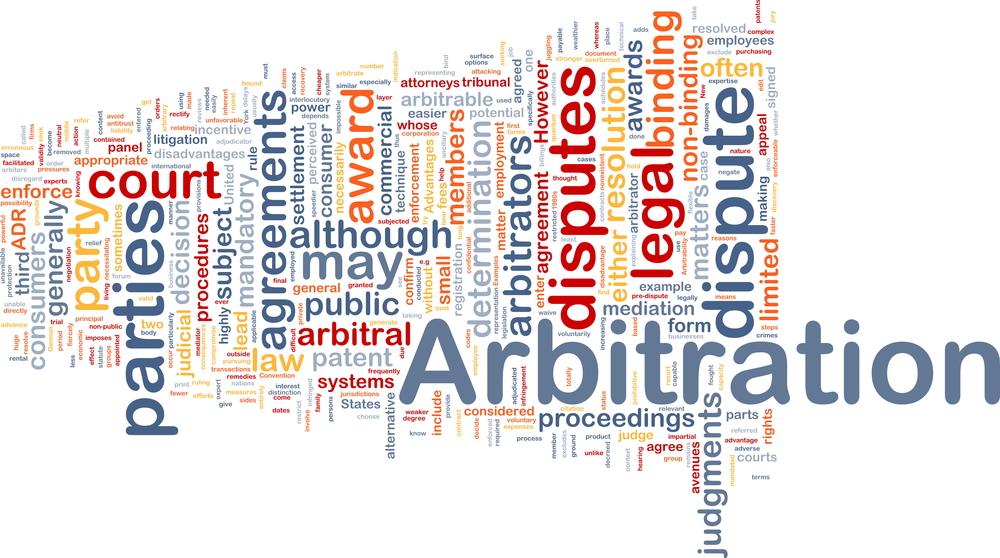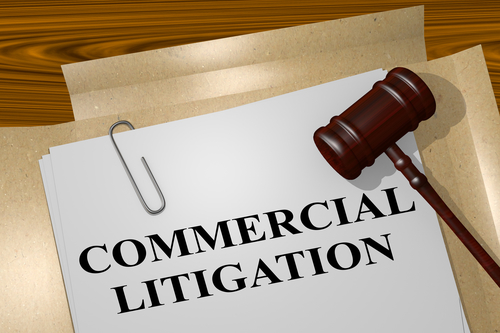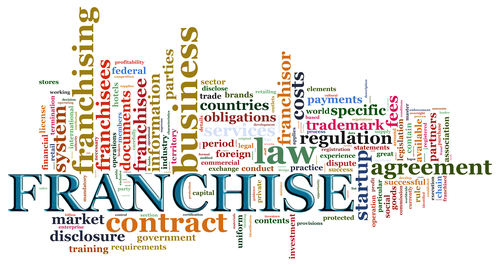CATEGORY: Employment Law

When pleading a claim of misappropriation of trade secrets, plaintiffs must walk a fine line
between providing sufficient specificity of the alleged trade secrets, on the one hand, and
preventing unnecessary and inadvertent public disclosure, on the other hand. In a trade secret
misappropriation action under common law or the Defend Trade Secrets Act of 2016,¹ the
plaintiff must define the allegedly misappropriated matter with reasonable specificity or
particularity.² A plaintiff’s allegations must be much more than general assertions. They must be
“sufficiently specific to allow a determination by the court.”³ Some states have codified this
requirement, including California⁴ and Massachusetts.⁵
In recent years, a number of New York federal court judges have emphasized the need for
plaintiffs to plead trade secret cases with particularity. Perhaps the earliest New York federal
court cases to affirm this specificity requirement was the 2008 case of Sit-Up Ltd. v.
IAC/InterActive Corp., which held that specificity is required at the time of disclosure and
throughout the litigation. In Sit-Up Ltd., Judge Denise Cote held that the plaintiff failed to define
a number of its allegedly misappropriated trade secrets with sufficient particularity.⁶ In her
decision, Judge Cote stated that “the Second Circuit has not squarely articulated a specificity requirement, [but] there is no reason to believe that it would permit a party to advance a trade secret claim in vague and ambiguous terms.”⁷ Simply put, the court held, this standard of specificity is required because it enables a defendant to adequately defend himself against claims of trade secret misappropriation.⁸
In the 2014 case of Big Vision Private Ltd. v. E.I. DuPont De Nemours & Co., Judge Katherine
Polk Failla of the Southern District concurred with Judge Cote’s discussion of Second Circuit
law on the pleading requirement and added that “each Circuit Court of Appeals to have opined
on this issue has required a comparable degree of specificity, as have numerous district courts
across the country.”⁹ Judge Failla unambiguously adopted a particularity requirement¹⁰ and ruled
that the plaintiff had failed to identify its alleged trade secrets with particularity.¹¹
Citing Sit-Up Ltd. in 2021, Judge Lewis J. Liman affirmed in Town & Country Linen Corp. v.
Ingenious Designs LLC that New York state common law requires a plaintiff to “describe the
alleged trade secret with adequate specificity to inform the defendants what it is alleged to have
appropriated.” Specificity is required both “at the moment of divulging” an alleged secret and
“before the court.”¹² The former requirement ensures that the defendant adequately understands the alleged trade secret enough to prevent misappropriation, while the latter requirement is intended to allow the defendant to defend against misappropriation claims.
In the last few years, several other Southern District judges have affirmed the requirement that
plaintiffs plead their trade secret misappropriation claims with specificity. The cases of Elsevier
Inc. v. Doctor Evidence, LLC¹³ and Zirvi v. Flatley¹⁴ are examples of such rulings.
In 2018, Southern District Judge Katherine Forest dismissed the Elsevier claimant’s pleading
because it failed to include specific allegations “supporting the various factors that define the
‘contours’ of a trade secret[.]”¹⁵ Judge Forest acknowledged that “[t]rade secrets are a narrow
category of confidential information; to survive a motion to dismiss, a party alleging that it owns
a trade secret must put forth specific allegations as to the information owned and its [independent
economic] value.”¹⁶ General allegations regarding confidential information and processes, the
court held, do not constitute a plausible trade secrets claim, as the proper standard for according
the status of “trade secrets” is far greater than the standard for “confidential information.”¹⁷
Two years later, the Clerk of the Southern District issued a Summary Order in Zirvi in which the
Court rejected the plaintiffs’ allegations failed because they failed to put forth specific
allegations as to the information owned or its value.¹⁸ The Court held that the allegations were too broad and vague, and found it “difficult to see how negative trade secrets consisting of unsuccessful efforts to develop trade secrets and experimental dead ends, can have independent
economic value when the end result of the process, the positive trade secrets, have in fact been uncovered.¹⁹ The Zirvi decision makes clear that plaintiffs are required to “plead their trade secrets with sufficient specificity to inform the defendants of what they are alleged to have
misappropriated.”²⁰
In 2022 and 2023, this heightened specificity requirement was echoed in several district court
cases within the Second Circuit, resulting in the dismissal of trade secret claims.²¹
The Eastern District has similarly abided by the standard requiring particularized pleading of
trade secrets. In Core SWX, LLC v. Vitec Grp. US Holdings, Inc., the court held that the
defendants’ counterclaims did not adequately identify the alleged trade secrets. As Judge James
M. Wicks explained, “district courts in this circuit routinely require that plaintiffs plead their
trade secrets with sufficient specificity to inform the defendants of what they are alleged to have
misappropriated.”²²
The heightened pleading requirement in trade secret misappropriation cases affirmed in recent
years in New York federal courts demonstrates the need, which has always existed albeit not always heeded, for counsel to thoroughly investigate a client’s purported trade secrets at issue before filing a lawsuit. These cases also highlight the importance of defendants considering whether to file a motion to dismiss on the grounds that the information alleged in a complaint cannot constitute trade secrets.
1 See “Defend Trade Secrets Act of 2016: A Five Year Overview,” www.richardfriedmanlaw.com.
2 To grant a plaintiff’s motion for a preliminary injunction, a court must “find that it clearly appears from specific facts” that the applicant is likely to succeed in demonstrating that the information is a trade secret, and the person against whom seizure would be ordered misappropriated the trade secret of the applicant by improper means or conspired to use improper means to misappropriate the trade secret of the applicant. 18 USCA § 1836 IV. See also 127 AM. JUR. TRIALS 283 § 16 (last updated August 2022) (providing a Cumulative Supplement of relevant cases). 3 AM. JUR. TRIALS § 16 (quoting Healthcare Services of the Ozarks, Inc. v. Copeland, 198 S.W.3d 604, 611 (Mo. 2006)).
4 Cal. Civ. Proc. Code § 2019.210 (requiring plaintiffs to “identify the trade secret with reasonable particularity” before commencing discovery).
5 Mass. Gen. Laws ch. 93, § 42D (“in alleging trade secrets misappropriation a party must state with reasonable particularity the circumstances thereof, including the nature of the trade secrets and the basis for their protection.”
6 Sit-Up Ltd. v. IAC/InterActive Corp., 2008 U.S. Dist. LEXIS 12017, at *29 (S.D.NY. 2008).
7 Id. at 11 (citing Heyman v. AR. Winarick, Inc., 325 F.2d 584, 590 (2d Cir. 1963) (affirming the district court’s factual finding that the plaintiff’s disclosure was “so vague and indefinite as not to be entitled to protection under the law of trade secrets.”).
8 Id.
9 Big Vision Private Ltd. v. E.I. DuPont De Nemours & Co., 1 F.Supp.3d 224, 258 (S.D.N.Y. 2014) (citations omitted).
10 Id. at 259 (“Several district courts within this Circuit have adopted this particularity requirement, and this Court now joins them.”) (citations omitted).
11 Id. at 266 (citations omitted).
12 Town & Country Linen Corp. v. Ingenious Designs LLC, 556 F. Supp. 3d 222, 270 (S.D.N.Y. 2021) (citing Sit-Up Ltd., 2008 U.S. Dist. LEXIS 12017, at *11) (alteration in original).
13 Elsevier Inc. v. Dr. Evidence, LLC, 2018 U.S. Dist. LEXIS 10730, at *10 (S.D.N.Y. 2018).
14 Zirvi v. Flatley, 433 F.Supp.3d 448, 465 (S.D.N.Y. 2020).
15 Elsevier Inc., 2018 U.S. Dist. LEXIS 10730, at *10 (“contours” of a trade secret include: “the information’s value, the extent to which it is known by those within and outside the business, the amount of effort or money spent to develop the information, and the ease with which the information could be acquired or developed by outsiders.”).
16 Id. at 3 (citation omitted) (alteration in original); see Zirvi, 433 F.Supp.3d at 465 (citation omitted).
17 Id. at 5. There is no one-size-fits all definition to a trade secret, so New York courts typically consider several factors to determine whether the information at issue qualifies. Id. at 3.
18 Zirvi, 433 F.Supp.3d at 465.
19 Id. at 465 (alteration in original).
20 Id. (citation omitted).
21 AA Med. P.C. v. Almansoori, 2023 U.S. Dist. LEXIS 207487, *26 (E.D.N.Y. 2023); UrthTech LLC v. GOJO Indus., 2023 U.S. Dist. LEXIS 125555 (S.D.N.Y. 2023); Beijing Neu Cloud Oriental Sys. Tech. Co. v. IBM, 2022 U.S. Dist. LEXIS 54348, *10 (S.D.N.Y. 2022); Altman Stage Light, Inc. v. Smith, 2022 U.S. Dist. LEXIS 22699 at *11 (S.D.N.Y. 2022) (examples of cases where plaintiffs’ claims were dismissed because of failure to meet this standard).
22 Core SWX, LLC v. Vitec Grp. US Holdings, Inc., 2022 U.S. Dist. LEXIS 125198, at *13 (E.D.N.Y. 2022) (citations omitted).

The Defend Trade Secrets Act of 2016 (“DTSA”) turned five years old on May 11, 2021. As a follow-up to our last article concerning misappropriation of trade secrets litigation, we are devoting this article to a review of the litigations which have arisen out of this relatively new statute.
The DTSA created a private federal cause of action for misappropriate of trade secrets for the first time. The law states, in part, that “[a]n owner of a trade secret that is misappropriated may bring a civil action under this subsection if the trade secret is related to a product or service used in, or intended for use in, interstate or foreign commerce.”1 Employers should consider invoking the statute in order to seek to prevent further disclosure of information they consider to be trade secrets if they: (i) believe such information may have already been exposed; (ii) seek to enjoin any further dissemination; (iii) seek to recover the alleged trade secrets; and/or (iv) seek to obtain monetary damages for losses related to the misappropriation, if any.
But there are quite a few defenses that defendants can assert to such an action, as was the case with the former senior partner of a preeminent consulting firm which our firm recently represented in an action in the District of New Jersey which was dismissed with prejudice in connection with settlements between the consulting firm and: (i) our client’s subsequent employer; and (ii) our client. Although our firm’s matters in recent years in this arena have been on behalf of defendants and prospective defendants, this article will hopefully provide some helpful suggestions for both plaintiffs and defendants under the DTSA.
Defining a Trade Secret
A company suing under the DTSA must prove that what has been misappropriated is in fact a trade secret. To succeed under the DTSA, a plaintiff must demonstrate both that it took reasonable measures to keep the information actually secret, and that the secret in question has economic value independent of not being generally known or available to ascertain by the public. Courts will generally then make a fact specific determination regarding whether the steps taken to keep the information secret were in fact “reasonable.” A useful illustration is WeRide Corporation, et al. v. Kun Huang, where the court held that restricting access with a password, encrypting the source code at issue, and requiring employees to sign guidelines that mandated protection of the company’s confidential information was enough to prove that reasonable measures had been taken with respect to the trade secrets.2 On the other hand, in Temuran v. Piccolo,3 the court held that sufficient steps had not been taken to protect the information at issue as the plaintiff had not alleged having employees sign any type of confidentiality agreement. A plaintiff must also allege more than an intent to keep information secret.4
Proving that a trade secret has independent economic value to the plaintiff is vital to a successful DTSA claim. In some instances a company can provide a court with a specific monetary value that was used to develop or create the trade secret. In WeRide, for example, the company alleged it spent over $45 million in developing the source code that was the trade secret at issue.5 Where monetary amounts can be proven with specificity, claiming that the trade secrets permit a company to maintain a competitive advantage can be enough to satisfy the independent economic value requirement in certain circumstances.6 However, if there is a means of recreating the information or a way to publicly access the information, the DTSA claim will fail on the grounds that the information has no special value to the company.
Using the Trade Secret in Interstate Commerce
The clause requiring the secret to be “related to a product or service used in, or intended for use in, interstate or foreign commerce”7 is understood broadly to mean that there must be some nexus with interstate commerce. Some examples that count for this requirement are: use of a former employer’s customer list to solicit out-of-state customers,8 sharing an employer’s trade secrets with customers around the world,9 soliciting business for a new employer from a former employer’s multi-state client contact list,10 shipping products to California customers from a Nevada warehouse,11 and using a former employer’s patient lists to solicit patients in a different state.12
Timing of Misappropriating the Trade Secret
Since the DTSA was only signed in 2016, some temporal issues arise in bringing a claim thereunder. The claim must be plead from the date of the initial misappropriation rather than the date when the plaintiff became aware of the misappropriation. However, some courts have sustained DTSA claims in response to motions to dismiss even if the misappropriation started before the law was enacted so long as it continued after the statute became law.13 At least one court has even allowed a claim to continue where there was pre-enactment taking of an alleged trade secret and post-enactment disclosure.14 Thus, while the law is technically forward looking from the time of enactment, courts have allowed claims to move forward in certain circumstances where the conduct straddled the effective date of the law.
Remedies
If a plaintiff is successful in proving its case, it may be entitled to remedies at law and in equity. The law provides for ex parte seizures of the trade secrets. Compensatory damages can be measured by: (i) unjust enrichment to the extent not accounted for in the actual loss calculation; or (ii) a reasonable royalty for the unauthorized disclosure or use of the trade secret. Punitive damages are also available up to two times the amount of the damages for willful and malicious misappropriation. An ex parte seizure order can enable a plaintiff to seize electronic software or hardware, papers, and other information belonging to the defendant(s) that contain the plaintiff’s trade secrets.
The DTSA is a great tool in the toolbox of employers who believe their trade secrets have been misappropriated. However, ample defenses are available to a defendant which require a plaintiff to prove that the information allegedly misappropriated is entitled to legal protection.
1 18 U.S.C.A. § 1836 (b) (1)
2 WeRide Corp. v. Kun Huang, 379 F. Supp. 3d 834 (N.D. Cal. 2019)
3 Temurian v. Piccolo, No. 18-CV-62737, 2019 WL 1763022 (S.D. Fla. Apr. 22, 2019). The Court also noted: “Generally, limiting employee access to the information and password-protecting the computer network on which the information resided [a]re positive steps in securing the alleged trade secret.” Yellowfin Yachts, Inc., 898 F.3d at 1300. However, those efforts may be undermined by the subsequent failure to safeguard the use of and access to the alleged trade secret. Id. at 1301. Indeed, “[d]isclosing the information to others who are under no obligation to protect the confidentiality of the information defeats any claim that the information is a trade secret.” M.C. Dean, Inc. v. City of Miami Beach, Fla., 199 F. Supp. 3d 1349, 1353 (S.D. Fla. 2016)”
4 Dichard v. Morgan, 2017 WL 5634110, at *2-3 (D.N.H. Nov. 22, 2017)
5 WeRide Corp. v. Kun Huang, 379 F. Supp. 3d 834 (N.D. Cal. 2019)
6 See, e.g., Teva Pharm. USA, Inc. v. Sandhu, 291 F. Supp. 3d 659, 675 (E.D. Pa. 2018)
7 18 U.S.C.A. § 1836 (b) (1)
8 Complete Logistical Servs., LLC v. Rulh, 350 F. Supp. 3d 512, 520 (E.D. La. 2018)
9 Source Prod. & Equip. Co., Inc. v. Schehr, 2017 WL 3721543, at *3 (E.D. La. Aug. 29, 2017)
10 Wells Lamont Indus. Grp. LLC v. Mendoza, 2017 WL 3235682, at *3 (N.D. Ill. July 31, 2017)
11 Officia Imaging, Inc. v. Langridge, No. SACV172228DOCDFMX, 2018 WL 6137183 (C.D. Cal. Aug. 7, 2018)
12 Yager v. Vignieri, 2017 WL 4574487, at *2 (S.D.N.Y. Oct. 12, 2017)
13 See, e.g., Hermann Int’l Inc. v. Hermann Int’l Europe, 2021 WL 861712, at *15-16 (W.D.N.C. Mar. 8. 2021)
14 Agilysis, Inc. v. Hall, 258 F. Supp. 3d 1331, 1348-49 (N.D. Ga. 2017)

Richard B. Friedman
Richard Friedman PLLC
200 Park Avenue Suite 1700
New York, NY 10166
TEL: 212-600-9539
[email protected]
www.richardfriedmanlaw.com
www.richardfriedmanlaw.com/blog
Connect with me on Linkedin

The limited liability company (LLC) has become one of the most commonly used business entities in New York because of the many benefits it provides to its members and managers. LLCs allow members to satisfy their business needs while still providing them with the same limited liability protection that limited partnerships provide. Although the flexibility of an LLC can be very beneficial, it is this commentator’s view that members of a New York LLC should not rely on New York’s Limited Liability Company Law (LLCL) to govern the activities of an LLC. If persons choose to form an LLC, it is essential that they have a clearly written operating agreement that provides explicit terms for, among other things, the LLC’s dissolution. A number of New York cases illustrate issues that arise when an operating agreement is vague on how to dissolve the LLC. Indeed, as discussed below, an LLC can be difficult to dissolve if the operating agreement is not explicit in this regard.
Under LLCL §702 a court may dissolve an LLC “whenever it is not reasonably practicable to carry on the business in conformity with the articles of organization or operating agreement.” In Matter of 1545 Ocean Avenue., LLC1, the Appellate Division for the Second Department articulated two factors courts in that department must consider when deciding if an LLC can be dissolved. The petitioner for the dissolution must show: (1) the management of the company is unable or unwilling to reasonably permit or promote the stated purpose of the company to be realized or achieved; and (2) continuing the company is financially unfeasible. In that case, the court found a dissolution was not justified.
Other New York cases demonstrate the obstacles LLCs can face when they do not have clear dissolution provisions in operating agreements. In Yu v. Guard Hill Estates, LLC2 the trial court did not allow a dissolution to occur when the only justification for dissolution was discord between family members. The court stated as follows: “While [the petitioner] complains that his family members have engaged in certain activities to further their personal ‘vendetta’ against him, his unflattering characterization of his family’s actions is not sufficient to support a cause of action that his family has abandoned the purpose of the LLC.” Another example when a New York court found that an LLC could not be dissolved is the case Kassab v Kasab3, where the Queens County Commercial Division denied dissolution because the “exile” of a member participating in the partnership did not satisfy either prong established in 1545 Ocean Avenue.4
However, there have been some New York cases where dissolution was allowed pursuant to LLCL §702. In Matter of 47th Rd. LLC5, the court stated that the existence of personal vendettas between two brothers who were “partners,” which threatened to result in physical violence and ruin the business, could result in a judicial dissolution. A similar result occurred in Matter of D’Errico6, after the majority members of an LLC named Epic locked out all of the minority members from the premises of the business and prevented the minority members from accessing all business accounts. The majority members even formed a new LLC called BeyondEpic. As a result of BeyondEpic having been formed, the court stated as follows: “BeyondEpic … reduced Epic to an entity that operates solely at BeyondEpic’s sufferance.” Accordingly, the court found that judicial dissolution of Epic under LLCL §702 was warranted.
As New York courts continue to establish precedents for LLCL §702, the significance of an unambiguous dissolution provision in LLC operating agreements is essential. While partners in a business at its inception are often not thinking about its demise, it is important to try to anticipate issues which should lead to a dissolution of the LLC. The cases discussed in this article exemplify how operating agreements that do not clearly delineate the grounds for dissolution can cause serious issues for persons involved in those LLCs. Simply relying on the default dissolution statute, LLCL §702, is a risk no members of a New York LLC should take.

Richard B. Friedman
Richard Friedman PLLC
200 Park Avenue Suite 1700
New York, NY 10166
TEL: 212-600-9539
[email protected]
www.richardfriedmanlaw.com
www.richardfriedmanlaw.com/blog
Connect with me on Linkedin
1 Matter of 1545 Ocean Ave., LLC, 72 A.D.3d 121 (2010).
2 Yu v. Guard Hill Estates, LLC 2018 N.Y. Slip Op 32466(ii) (Sup.Ct. Sept. 28, 2018).
3 Kassab v. Kasab, 65 N.Y.S.3d 492 (N.Y. Sup. 2017).
4 Supra note 1.
5 In Matter of 47th Rd. LLC 54 N.Y.S. 3d 610 (N.Y. Sup. Ct. 2017).
6 Matter of D’Errico No. 610084 (Sup.Ct. Nassau County Aug. 21, 2018).

Corporate dissolution proceedings in New York are governed by strict procedural rules. When litigation is pending between the owners of one or more closely held companies, it is not uncommon in my experience for the defendant(s) to want to assert a counterclaim seeking dissolution of the relevant corporation(s). However, filing a separate dissolution proceeding is generally a better tactical move. A would-be dissolution petitioner recently found this out the hard way.
In Corner Furniture Discount Ctr., Inc. v Sapirstein, two partners had formed a retail furniture business in the 1980s, which later expanded into four corporations: two furniture entities and two real estate holding companies. In 2018, after discovering that his partner Sapirstein had apparently been embezzling funds for many years, Stechler removed Sapirstein as an officer and director of the business and barred him from decision making. The furniture entities sued Sapirstein alleging claims for breach of fiduciary duty, fraud, conversion, and violation of the faithless servant doctrine.
Sapirstein filed an answer and alleged counterclaims against all four entities, including a claim for dissolution based on “oppression” and “waste” under Section 1104-a of the Business Corporation Law (the “BCL”).
The four entities filed a motion to dismiss Sapirstein’s dissolution counterclaim as procedurally defective and non-compliant with BCL Sections 1105 and 1106. Section 1105 requires a party suing to dissolve a corporation to file a “petition for dissolution,” which Sapirstein had not done. Section 1106 requires a party suing to dissolve to file the petition by “order to show cause,” outlining very specific procedures the court and petitioner must follow once the order to show cause is filed.
These specific procedures include:
- “the order to show cause must require the corporation and all interested persons to show cause not less than four weeks after the granting of the order, why the corporation should not be dissolved;
- the court may order the corporation, officers, and directors to produce to the court a schedule of pertinent information, including corporate assets and liabilities, and the name and address of each shareholder, creditor, and claimant;
- the petitioner must publish the order to show cause at least once in each of the three weeks prior to the return date of the order to show cause in a newspaper of general circulation in the county where the corporation’s principal office is located;
- the petitioner must serve the order to show cause upon the state tax commission, the corporation, and each person named in the petition, or in any schedule of shareholders, creditors, or claimants at least ten days prior to the return date of the order to show cause, or if served by mail, at least 20 days before the return date; and
- the petitioner shall file the order to show cause and the petition with the clerk of the county where the office of the corporation is located within ten days after the order is entered, and shall file the schedule of information required by the court, if any, 10 days thereafter.”
Sapirstein’s dissolution counterclaim complied with none of these procedures. After discovering his error, Sapirstein attempted to belatedly file an order to show cause, petition, and declaration for dissolution. In his decision, the Judge noted that a “proponent of dissolution must comply with Business Corporation Law 1105 and 1106” and “[t]here must be strict compliance with the procedures set forth” in the statutes. The court cited, among other decisions, In re WTB Properties, Inc. In WTB, the Second Department had held that the trial court erred in ordering dissolution before the petitioner satisfied the requirements of BCL 1106. The Court also held that the lower court had the discretion to allow the petitioner to “amend the petition and comply with the statutory requirements.” Sapirstein’s error in not seeking leave to amend his pleading as an answer/petition was fatal. As the Court held, “Sapirstein’s efforts to correct his defective first counterclaim with a Petition and declaration in support, fail as they do not comply with Business Corporation Law §§ 1105 and 1106. Absent from Sapirstein’s submission are an Order to Show Cause, a Verified Petition, and proof of publication. Sapirstein fails to plead a cause of action in compliance with the dictates of Business Corporation Law §§ 1105 and 1106″ (citations omitted). As a result, the court dissolved Sapirstein’s dissolution claim.
Sapirstein went on to bring a separate proceeding in Bronx County Supreme Court for judicial dissolution of the businesses. This petition was essentially a carbon copy of the one he had filed for Corner Furniture just over a week earlier. The court refused to sign his order to show cause a whopping four times, each for a different procedural failure, including:
- Failure to include the affidavit and exhibits upon which the petition was based.
- The order to show cause provided insufficient basis for the relief sought.
- Failure to comply with the notice requirement of 22 NYCRR 202[.7] (f) which requires the movant to show that a “good faith effort has been made to notify the party against whom the temporary restraining order is sought of the time, date and place that the application will be made in a manner sufficient to permit the party an opportunity to appear in response to the application.”
- Failure to comply with the prior notice requirement of 22 NYCRR 202.7 (f).
The Court granted Sapirstein’s fifth proposed order to show cause, but only to the extent of ordering an appearance. The court also reassigned the proceeding to Justice Franco, the same justice who dismissed Sapirstein’s dissolution counterclaim in Corner Furniture.
It seems apparent that Sapirstein would have been better off filing a separate dissolution proceeding than asserting a counterclaim seeking dissolution. He could have eventually filed a motion to consolidate the two cases.
As this case illustrates, when filing a dissolution proceeding in New York, the statutes and applicable court rules must be strictly complied with so as to avoid an embarrassing and expensive loss on procedural grounds.

Richard Friedman PLLC
200 Park Avenue Suite 1700
New York, NY 10166
TEL: 212-600-9539
[email protected]
www.richardfriedmanlaw.com
www.richardfriedmanlaw.com/blog
Connect with me on Linkedin
1 2019 NY Slip Op 32245(U) [Sup Ct Bronx County June 14, 2019].
2 A discussion of the corporate machinery by which Stechler was able to effectuate these changes in corporate governance are beyond the scope of this article.
3 New York Consolidated Laws, Business Corporation Law, BSC § 1105.
4 New York Consolidated Laws, Business Corporation Law, BSC § 1106.
5 Id.
6 291 AD2d 566 [2d Dept 2002].
7 Id.

Minority members in New York limited liability companies (“LLCs”) often did not prevail in actions brought under section 702 of the New York LLC Law for judicial dissolution. One of the reasons was that the statute’s “not reasonably practicable” requirement for dissolution was interpreted by many courts to require a showing of the LLC’s failed purpose or financial failure. Oppression, fraud, and other overreaching conduct by the majority directed at the minority were not considered grounds for dissolution. Similarly, minority partners have often faced substantial obstacles in seeking to dissolve New York partnerships.
Over the last year, several New York courts have evaluated the rights of minority members seeking to dissolve a New York LLC and minority partners seeking to dissolve a partnership. Below, we will examine two of those cases.
Minority Partner’s Attempt to Dissolve a Partnership Backfires as New York’s Highest Court Approves Discount-Laden Valuation of Departing Partner’s Interest
In Congel v. Malfitano, 31 N.Y.3d 272 (2018), a minority partner engaged in a unilateral attempt to dissolve a commercial real estate partnership by written notice under Partnership Law §62. His majority co-partners immediately sued for damages resulting from an alleged wrongful dissolution under their partnership agreement, which provided that a voluntary dissolution could only be accomplished by a majority vote. The majority of partners ultimately prevailed on liability. A trial was held to determine the value of the wrongfully withdrawn partner’s interest under Partnership Law §69.
The trial court began its analysis with a stipulated value of the minority partner’s interest of $4.85 million, then deducted approximately $4 million in damages and discounts, including a 35% Discount for Lack of Marketability (“DLOM”). The majority partners sought an additional 66% Discount for Lack of Control (“DLOC”), but the trial court rejected their argument based on longstanding case law prohibiting the application of DLOC in fair-value proceedings under BCL §§623 and 1118.
On appeal, the Second Department ruled in favor of the majority partners, distinguishing the case law applying the “fair value” standard in the corporation context from the “fair market value” standard applicable to partnership interests under Partnership Law §69. The Appellate Division consequently discounted the minority partner’s interest by an additional 66% which resulted in a diminution of the value of his interest by hundreds of thousands of dollars. The court’s actions should serve as a cautionary tale to minority partners who attempt to cash out their interests by wrongfully dissolving a partnership when the remaining partners wish to continue the venture.
On appeal, the Court of Appeals affirmed and held that the prohibition of DLOC in fair-value proceedings under BCL §§623 and 1118 did not apply in the context of Partnership Law §69, which “does not contemplate a valuation of the entire business as if it were being sold on the open market, but rather a determination of the fair market value of the wrongfully dissolving partner’s interest as if that interest were being sold piecemeal and the rest of the business continuing as a going concern.”1 Such an interest, New York’s highest court held, “is worthless to anyone buying that interest alone.”2 The Court of Appeals, therefore, affirmed the Appellate Division’s application of 35% marketability, 66% minority, and 15% goodwill discounts, which collectively erased around 80% of the stipulated top-line valuation.
Even more notable than its use of multiple valuation discounts was the high court’s adoption of a contract-centric approach to the wrongful dissolution issue. The trial court and the Appellate Division had both held that the partnership was not at-will and that the minority partner had wrongfully sought to dissolve it under Partnership Law §62; the trial court’s reasoning was that the partnership agreement specified a “particular undertaking,” and the Appellate Division’s reasoning was that the agreement specified a “definite term.” The Court of Appeals came to the same conclusion but dispensed with the at-will analysis under the statute, determining instead that “Partnership Law §62 has no application here, because the parties to the agreement clearly specified under what terms [the partnership] could be properly dissolved, i.e., what would constitute a dissolution under the agreement and what would constitute a dissolution in contravention of it.”3
Instead of focusing, as did the lower courts, on whether the partnership met Partnership Law § 62 (1) (b)’s durational criteria of “definite term” or “particular undertaking,” the Court of Appeals decided the wrongfulness of the minority partner’s unilateral dissolution without recourse to the statute, and instead employed a purely contractual approach in affirming the lower courts’ finding of wrongful dissolution based on the partnership agreement’s “clear and unequivocal terms” providing the exclusive means by which the partnership could be dissolved.
This contract-centric approach to the question of wrongful dissolution offers a new mode of analysis and suggests new drafting solutions for transactional lawyers who opt to form partnerships under New York law.
LLC Dissolutions: A Path to Victory for Minority Members
LLC dissolutions involve a standard that differs sharply from the traditional standards of deadlock and oppression associated with corporations. Ever since the Second Department’s seminal 1545 Ocean Avenue decision in 2010, which expressly divorced LLC Law §702 from the law as it had developed under Business Corporation Law §§11044 and 1104-a, dissolution of an LLC has required the petitioning member of an LLC to show either that (1) management is unable or unwilling to promote the business to achieve its stated purpose, or (2) continuing the business is financially unfeasible.5
In Matter of D’Errico, Decision & Order, Index No. 610084/2016 (Sup Ct. Nassau County, Aug. 21, 2018), the Nassau County Commercial Division analyzed 1545 Ocean Avenue’s standard to find that the subject company had been relegated to a “puppet” company, and that its continued existence was therefore rendered meaningless by the majority members’ misconduct. Matter of D’Errico involved a company named Epic Gymnastics, LLC (Epic), which was formed to operate a local gymnastics and exercise facility. The parties never entered into an operating agreement for Epic, but testimony during the trial demonstrated that the purpose of the company was to “jointly operate a high-quality gymnastics facility” whose purpose later was expanded to include other exercise classes. Epic soon racked up debt, much of it personally incurred and guaranteed by one of the minority petitioners. The majority of respondents locked the petitioners out of the company’s facility and bank account and formed a related company called BeyondEpic in which petitioners had no ownership interest. BeyondEpic began collecting monies from Epic’s customers, depositing the funds into Epic’s account, and utilizing the facility from which the petitioners had been excluded.
Following a trial on the dissolution claim, in which the minority member had sued under §702, Nassau Commercial Division Justice Timothy S. Driscoll ordered dissolution, finding that “it appears that BeyondEpic has reduced Epic to a marionette to be manipulated at will by BeyondEpic,” and that it was, therefore “nihilistic for [Epic] to continue.” At the conclusion of his ruling, Justice Driscoll notes the Second Department’s endorsement of equitable buy-out in Mizrahi v. Cohen6 and invites the respondents to apply to the Court to buy out the petitioners’ interest in Epic.

Richard Friedman PLLC
200 Park Avenue Suite 1700
New York, NY 10166
TEL: 212-600-9539
[email protected]
www.richardfriedmanlaw.com
www.richardfriedmanlaw.com/blog
Connect with me on Linkedin
1 31 N.Y.3d 272 at 296.
2 Id.
3 Id. at 883.
4 New York’s Business Corporation Law (“BCL”) provides shareholders owning 50% or more of a corporation two paths to judicial dissolution: a) BCL § 1104 – deadlock at the board or shareholder level such that the corporation “cannot continue to function effectively, and no alternative exists but dissolution”; and b) BCL § 1104-a – where directors or those in control of the corporation have been guilty of illegal, fraudulent, or oppressive actions toward the complaining shareholder(s).
5 In re 1545 Ocean Ave., LLC, 72 A.D.3d 121 (2d Dept. 2010).
6 2013 NY Slip Op 02056 (2d Dept Mar. 27, 2013). In this case, Mizrahi and Cohen were 50% members of a real estate company whose operating agreement required unanimous consent for capital calls. Cohen repeatedly “borrowed” hundreds of thousands of dollars from the company for personal debts, which he did not repay, exacerbating the LLC’s insolvency. In its opinion, the Second Department altered equitable buyouts from a remedy the court sometimes may order to one the court sometimes must order.

Since its inception in 1995, the Commercial Division of the Supreme Court of the State of New York has expanded to become the preeminent forum for resolution of complex commercial disputes in New York State due to the expertise of its judges and rules designed to promote efficiency. Among other things, the Commercial Division is noted for its Commercial Division Advisory Council, which is composed of experienced commercial litigators, judges, and in-house counsel who have been judicially appointed. The Council provides advice concerning: (i) issues of interest to commercial litigators; (ii) the changing landscape of commercial litigation in New York; (iii) amended rules of practice; and (iv) other important issues relating to practice in the Commercial Division. The New York County Commercial Division also has an Advisory Committee comprised of judicially appointed private practitioners who meet periodically with the judges of that court.
The Commercial Division employs its own statewide rules, located at 22 N.Y.C.R.R. § 202.70, which significantly augment New York’s Civil Practice Law and Rules (“CPLR”). These rules are tailored to promote efficiency and fairness to commercial litigants and provide them advantages over litigating in the regular Civil Branch. Among these advantageous rules are:
- Proportionality
- The preamble and guidelines of the Commercial Division Statewide Rules state that principles of proportionality apply to discovery.
- Optional Accelerated Adjudication
- Rule 9 of the Commercial Division Statewide rules permits parties in all actions other than class action to accelerate litigation, with the intention of ensuring that all such actions are trial-ready within nine months from the date of filing.
- Depositions
- There is a presumptive limit of ten depositions per side with each lasting presumptively no more than seven hours.
- Depositions of Entities
- Pursuant to Rule 11-f, parties may subpoena and examine at deposition entities by questioning an individual designated by the entity to be examined.
- Limits on Interrogatories
- Pursuant to Rule 11-a, the Commercial Division generally limits the number of interrogatories to 25, including subparts, and limits interrogatories during discovery to:
- names of witnesses with material knowledge or information;
- computation of each category of damage alleged; and
- the existence, custodian, location, and general description of material and necessary documents.
- Pursuant to Rule 11-a, the Commercial Division generally limits the number of interrogatories to 25, including subparts, and limits interrogatories during discovery to:
- Streamlined Privilege Logs
- Rule 11-b states that the Commercial Division prefers that parties use categorical designations to reduce the time and costs associated with preparing privilege logs. Accordingly, the Commercial Division may, upon application by the burdened party, require the party who insists on document-by-document privilege log listings to pay costs and attorney’s fees associated with their creation.
- No Boilerplate Objections to Document Requests
- Pursuant to Rule 11-e, the Commercial Division requires parties to either:
- state that the production will be made as requested; or
- state with reasonable particularity the grounds for any objection to production.
- Accordingly, parties can no longer object to document requests with broad, vague language.
- Pursuant to Rule 11-e, the Commercial Division requires parties to either:
- Streamlined Discovery Disputes
- Rule 14 provides that, in the absence of a specific judge’s rules, parties must seek a pre-motion court conference concerning a discovery dispute via submission of letters of up to three pages, saving clients the substantially greater expense and delay of motion practice.
- Standardized Confidentiality Order Form
- Pursuant to Rule 11-g, the Commercial Division encourages parties to use the Confidentiality Order Form located in Appendix B of the statewide rules and requires parties who resist this practice to provide a written explanation of why deviations are warranted.
- Settlement Conference Before Non-Presiding Justice
- Pursuant to Rule 3(b), the Commercial Division permits parties (upon joint request by counsel) to proceed with a settlement conference before a justice other than the justice assigned to the case.
- Testimony by Affidavit
- Pursuant to Rule 32-a, the Commercial Division may require that the direct testimony of a party’s own witness in a non-jury trial or evidentiary hearing be presented in affidavit form.
- Time-Limited Trials
- Pursuant to Rule 26, the Commercial Division requires parties to furnish the court with a realistic estimate of the length of the trial at least ten days prior to the trial.
- Monetary Thresholds
- Of the ten jurisdictions which have one or more Commercial Division judges, six counties in or near New York City have the following minimum monetary thresholds to bringing an action in their courts to promote efficiency:
- Kings County: $150,000
- Nassau County: $200,000
- New York County: $500,000
- Queens County: $100,000
- Suffolk County: $100,000
- Westchester County: $100,000
- Of the ten jurisdictions which have one or more Commercial Division judges, six counties in or near New York City have the following minimum monetary thresholds to bringing an action in their courts to promote efficiency:
As illustrated, the Commercial Division’s rules and procedures are designed specifically for the needs of commercial litigants, making litigation more time and cost efficient, more predictable, and more hospitable to complex commercial cases. Having a lawyer with substantial experience in, and a deep understanding of the rules and procedures of, the Commercial Division can be vital to success in commercial litigation.

830 Third Avenue, 5th Floor
New York, New York 10022
TEL: 212-600-9539
FAX: 212-840-8560
[email protected]
www.richardfriedmanlaw.com
www.richardfriedmanlaw.com/blog
Connect with me on Linkedin

What Are They?
Restrictive covenants are often found in agreements between franchisors and franchisees. The purpose of such covenants is to prevent franchisees—who are the owners and operators of businesses such as “chain-style” stores and restaurants—from harming franchisors by providing similar goods or services after the franchise agreement expires or is terminated. Restrictive covenants can serve to protect the good will of the franchisor after the franchise is reconveyed. See Jiffy Lube Int’l, Inc. v. Weiss Bros., 834 F. Supp. 683, 691 (D.N.J. 1993).
A typical restrictive covenant clause in a franchise agreement provides that the franchisee may not own or operate a similar or competing entity in a specified area for a specified period of time after the franchise relationship expires or is terminated.
When Are They Enforceable?
In order to be enforceable in New York, restrictive covenants in franchise agreements must be:
1. reasonable in geographical and temporal scope; and
2. necessary to protect a franchisor’s legitimate interest.
ServiceMaster Residential/Commercial Servs., L.P. v. Westchester Cleaning Servs., Inc., No. 01 CIV. 2229 (JSM), 2001 WL 396520, at *3 (S.D.N.Y. Apr. 19, 2001).
In determining whether to grant an injunction to enforce a restrictive covenant, New York courts weigh the harm that such an injunction would likely cause to the franchisee and to the general public. Golden Krust Patties, Inc. v. Bullock, 957 F. Supp. 2d 186, 198 (E.D.N.Y. 2013) (citing BDO Seidman v. Hirshberg, 93 N.Y.2d 382, 389, 690 N.Y.S.2d 854, 712 N.E.2d 1220 (N.Y.1999).
New York courts have held franchise agreements akin to employment agreements. Am. Jur. 2d, Monopolies, Restraints of Trade, and Unfair Trade Practices §§ 511-521. Accordingly, the general rules and policies that govern restrictive covenants in employment agreements also apply in courts’ analyses of such covenants in franchise agreements. Id. We have written recently on the current state of restrictive covenants under New York law. That article can be found here.
1) Reasonable in Geographical and Temporal Scope
Under New York law, a restrictive covenant will be found enforceable where it is reasonable in geographic and temporal scope. Golden Krust Patties, Inc. at 198. Whether geographic and temporal scope is reasonable is acutely fact specific. Courts recognize franchisors’ interests in preventing ex-franchisees selling to customers of the former franchise, thereby profiting from and potentially damaging the franchisor’s good will. See ServiceMaster Residential/Commercial Servs., L.P. v. Westchester Cleaning Servs., Inc., No. 01 CIV. 2229 (JSM), 2001 WL 396520, at *3 (S.D.N.Y. Apr. 19, 2001); Carvel Corp. v. Eisenberg, 692 F.Supp. 182, 185–86 (S.D.N.Y.1988) (restriction against competing stores within two miles for three years was “reasonably related to Carvel’s interest in protecting its know-how and to its ability to install another franchise in the same territory”). However, courts will not enforce restrictions regarding when and where a former franchisee can compete when such restrictions are found to be overbroad and detrimental to the franchisee’s ability to earn a livelihood.
In Singas Famous Pizza Brands Corp. v. New York Advertising LLC, 468 F. App’x 43 (2d Cir. 2012), the Second Circuit held that a restrictive covenant that prohibited a former pizza store franchisee from engaging in “the Italian food service business” within ten miles of the franchisee’s former location for a two-year period was reasonable. The Court based its conclusion on evidence that it had taken four years for the former franchisee to find a suitable location for the Singas. The Court also stated that the ten-mile geographical restriction was “reasonably calculated towards furthering [the franchisor’s] legitimate interests in protecting its ‘knowledge and reputation’ as well as its ‘customer goodwill.’” See Id. at 46–47.
However, the court reached a somewhat different result in Golden Krust Patties, Inc. v. Bullock. In that matter, Golden Krust, a Caribbean fast-food chain, sought a preliminary injunction against a former franchisee whose franchise agreement was terminated after the franchisee was discovered to have been selling food products manufactured by Golden Krust’s competitors. The franchise agreement stated that, for two years after expiration or termination of the agreement, Golden Krust franchisees were restricted from opening any restaurant at or within ten miles of the franchise location, or within five miles of any other Golden Krust in operation or under construction.
The Eastern District Court ultimately granted the injunction but modified the geographic constraints of the non-compete provision to reflect “the densely populated nature of the New York Metropolitan area.” Golden Krust Patties, Inc. at 199 (E.D.N.Y. 2013). Reasoning that “most consumers in that region will not travel ten miles—or even five miles—to a fast-food establishment,” the Court determined that a four-mile restriction from the franchise location was more appropriate than the original ten-mile restriction. Id. Additionally, the Court reduced from five miles to two and a half miles the required minimum distance of restaurants that could be opened by the former franchisee from any Golden Krust location. The Court cited the close proximity between Golden Krust locations (often less than one mile apart) as evidence that a broad non-compete zone was not necessary. Id.
The Golden Krust Court distinguished the case from Singas, holding that Singas had only restricted franchisees from operating Italian food service businesses, whereas Golden Krust restricted former franchisees from operating any type of restaurant business. Id. It is reasonable to believe that the court would have been less inclined to modify the geographic scope of the non-compete had Golden Krust restricted franchisees only from serving Caribbean-style food. Thus, one major takeaway from these cases is that New York courts are more likely to find temporal and geographic restrictions to be reasonable if a franchise agreement’s non-compete clause is sufficiently narrow in other ways.
2) Legitimate Business Interests
New York courts have traditionally required that restrictive covenants in franchise agreements, in addition to being reasonable in time and scope, serve legitimate business interests. ServiceMaster Residential/Commercial Servs., L.P. at *3. As already noted above, courts recognize in franchisors a legitimate interest in guarding against former franchisees’ exploitation of i) the knowledge provided by the franchisor and ii) the franchisor’s customer base. In ServiceMaster Residential, the Court held there to be “a recognized danger that former franchisees will use the knowledge that they have gained from the franchisor to serve its former customers, and that continued operation under a different name may confuse customers and thereby damage the good will of the franchisor.” ServiceMaster Residential/Commercial Servs., L.P at *3 (citing Jiffy Lube Int’l, Inc. v. Weiss Bros., Inc., 834 F.Supp. 683, 691-92 (D .N.J.1993) (upholding ten-month, five-mile restriction on rapid lube operation); Economou v. Physicians Weight Loss Ctrs., 756 F.Supp. 1024, 1032 (N.D.Ohio 1991) (upholding one-year, fifty-mile restriction on diet center).
Legitimate business interests are strengthened when the franchisor has provided the franchisee with unique access to training and clientele. In finding that ServiceMaster’s restrictive covenant served a legitimate interest, the Court emphasized that the franchisor had provided the franchisee with training and confidential manuals regarding how to launch a restoration cleaning business. ServiceMaster Residential/Commercial Servs., L.P at *3.
Likewise, in RESCUECOM Corp. v. Mathews, No. 5:05CV1330 (FJS/GJD), 2006 WL 1742073, at *1 (N.D.N.Y. June 20, 2006), the Court found that the franchisor-plaintiff had provided the former franchisee with “training and manuals pertaining to the best methods for operating a successful computer sales and services business . . . [and] extended to the defendant the knowledge and ability to launch and successfully operate a computer sales and services business.” The franchisor had also provided the franchisee with access to clientele, evidenced by the fact that the franchisee successfully diverted at least five of the franchisor’s former customers. Id. at *2. The Court granted a preliminary injunction against the defendant, who had opened a computer sales company in the same location as the franchise he had previously operated.
3) Weighing the Interests of the Franchisee and the Public
In determining whether to grant injunctions based upon the restrictive covenants of franchise agreements, recent cases have emphasized the balancing of the franchisor’s interests against the interests of both the public and the franchisee. See Singas Famous Pizza Brands Corp. at *12; Golden Krust Patties, Inc. at 198.
Singas and Golden Krust—two of the most recent leading New York decisions involving restrictive covenants in franchise agreements—explicitly consider the potential harm of enforcing the non-compete provisions at issue to both the former franchisees and the public interest. Both decisions ultimately found the covenants enforceable and granted injunctions (though the Golden Krust Court, as discussed above, modified the temporal and geographic scope of the provision).
In Singas, the Court acknowledged that defendants invested significant time and money into restaurants they had hoped would be Singas franchises. However, according to the Court, “any hardship caused by an injunction was caused by the defendants’ own violation of the Agreement” when they opened a restaurant location as a purported franchise without having received permission from Singas. Singas Famous Pizza Brands Corp. at *12.
In Golden Krust, the Court also found that any harm caused to defendants by an injunction would stem from their own wrongdoing, as the former franchisee had sought to pass off a competitor’s product as a Golden Krust product, and had continued to operate after termination in contravention of the franchise agreement. Golden Krust Patties, Inc, at 199–200. In addition, the Golden Krust Court found that the public would be harmed if the defendants were allowed to continue to use the franchisor’s trademarks and solicit Golden Krust customers. The Court stated as follows: “There is likely a greater harm to the public in the form of consumer confusion if defendants are not enjoined.” Golden Krust Patties, Inc. at 200.
Conclusion
The general rules and policies that govern restrictive covenants in employment agreements also apply in New York courts’ analyses of such covenants in franchise agreements. However, courts will give deference to franchisors which have provided unique access to training and other benefits to franchisees. Thus, as with such cases in the employment context, litigations involving the alleged breach of restrictive covenants in franchise agreements are very factually intensive and are best handled by counsel who regularly represent clients in such matters.
 Richard B. Friedman
Richard B. Friedman
Richard Friedman PLLC
830 Third Avenue, 5th Floor
New York, New York 10022
TEL: 212-600-9539
[email protected]
www.richardfriedmanlaw.com
www.richardfriedmanlaw.com/blog
Connect with me on Linkedin

The Defend Trade Secrets Act of 2016 (the “DTSA”) is a federal statutory vehicle that companies can use to try to protect their most valuable assets (along with their employees, hopefully) — their trade secrets. Since the DTSA is only slightly more than a year old, there have been relatively few federal court decisions addressing the scope and breadth of the statute. One such case decided this summer in the Northern District of Illinois, Cortz, Inc. v. Doheny Enterprises, Inc., 2017 WL 2958071 (N.D. Ill. 2017), sheds light on the type of information afforded protection under the DTSA. The decision also offers insight as to how a plaintiff can improve its chances of securing a preliminary injunction at a misappropriation hearing under the DTSA as well as under state law and how a company defendant can attempt to defeat that motion.
In Cortz, plaintiff Cortz, Inc., a seller of swimming pool and spa products, initiated a suit against a former employee, Tim Murphy, and his new employer, Doheny Enterprise Inc., and sought a preliminary injunction prohibiting Murphy from continuing to work at Doheny. Among Cortz’s allegations were that Murphy possessed information about the prices that Cortz paid its vendors.
Cortz’s preliminary injunction motion was denied. The case provides us with at least three key takeaways vis-à-vis trade secret preliminary injunction motions.
First: Identify the Alleged Trade Secret with Particularity and Not Just a Body of Information in Which a Secret May Lie.
Cortz alleged in its complaint that “financial information” had been misappropriated. Although the DTSA includes in its definition of trade secret “financial information” and “financial data,” the Illinois District Court held that a mere allegation of misappropriated “financial information” was insufficient under the DTSA. Instead, the Court stated, a plaintiff must allege “‘concrete secrets.’” Cortiz, Inc., quoting Composite Marin Propellers, Inc. v. Van Der Woude, 962 F.2d 1263, 1266 (7th Cir. 1993) (per curiam).
During the hearing, Cortz introduced evidence that Murphy had access to pricing as to its 20,000 (!) different products with respect to its approximately 400 vendors and that vendor pricing is relevant for about two to three years. Cortz also introduced evidence that this price list was unique to Cortz even though its competitors purchased similar or identical products from the same vendors since specific retailers often negotiate their own prices with suppliers. Because Cortz had clarified that this was the specific information it was alleging to be a trade secret, the Court stated that it was prepared, for argument’s sake, to assume that Cortz had satisfied the particularity requirement under the DTSA.
The Court reached that conclusion despite stating that the facts that Cortz (i) had required vendors to sign an agreement containing a confidentiality clause and (ii) had entered into non-disclosure agreements with Doheny and Murphy while discussing a potential sale to Doheny (which obviously never went through) was insufficient to prove that it had adequately protected its trade secrets. Specifically, the Court stated, Cortz had failed to show, among other things, “the amount of time, effort, or money that it expended in developing its vendor pricing nor whether it would be difficult to duplicate its effort in doing so.”
As summarized below, Cortz’s failure to present admissible and credible evidence that the defendants had misappropriated its trade secrets was fatal to its preliminary injunction motion.
Second: Since the Rules of Evidence Apply at the Preliminary Injunction Stage, It Is Critical that Evidence of Misappropriation Falls within Applicable Rules.
At the risk of stating the obvious, the rules of evidence apply in preliminary injunction hearings. Thus, plaintiff’s counsel must ensure that the evidence it presents at the hearing is not only persuasive but admissible. During the hearing in Cortz, for example, the Court determined that certain third-party testimony was inadmissible hearsay because it was offered for the truth of the matter asserted and did not fall within a hearsay exception.
Of course, it is not enough for evidence to be admissible. It must also be credible and relevant. In Cortz, the Court found that there was no credible evidence that Murphy physically took any documents from his former employer, much less trade secret information, and that any vendor pricing information he remembered from his prior employment would be stale and irrelevant. Thus, the Court held that Cortz had failed to present admissible, credible, and relevant evidence to support its misappropriation claims.
At the risk of also stating the obvious, plaintiff’s counsel in a trade secrets misappropriation case, as in all cases, must:
• vet witnesses by assessing their credibility;
• ensure that evidence can be introduced for an admissible purpose; and
• determine whether the evidence at hand would further the plaintiff’s cause in court or is likely to be deemed irrelevant to the specific claims at hand.
Third: There Must Be Admissible, Credible Evidence of Actual, Not Merely Hypothetical, Misappropriation.
The Cortz Court pointed out that “it is well-established…that an ‘employer’s fear that its former employee will use the trade secrets in his new position is insufficient to justify application of the inevitable disclosure doctrine.’” Cortz, Inc., quoting Triumph Packaging Grp., 834 F. Supp. 2d 796, 809 (N.D. Ill. 2011). Among other evidentiary deficiencies, Cortz was not able to offer credible evidence that Murphy occupied the same or a similar function at Doheny as he had at Cortz. Further, Cortz’s contention that Murphy would inevitably disclose the supposed trade secrets was rejected because it was unable to demonstrate that he had in fact done so. The Court held that a preliminary injunction would not be granted in reliance on the much maligned so-called inevitable disclosure doctrine. (This doctrine is likely to be the subject of a future article.)
In conclusion, it is important for companies to consult counsel concerning steps that should be taken to try to ensure the protection of information that they consider to be trade secrets long before litigation is commenced. To be most effective, this advice must include an analysis of the particular jurisdiction’s requirements for treatment of information as legally protectable trade secrets in addition to requirements under the DTSA. Similarly, companies defending against misappropriation of trade secret claims under the DTSA should view Cortz as a good starting point for formulating their defenses against such claims at the all important preliminary injunction phase where these cases are often resolved.

830 Third Avenue, 5th Floor
New York, New York 10022
TEL: 212-600-9539
[email protected]
www.richardfriedmanlaw.com
www.richardfriedmanlaw.com/blog
Connect with me on Linkedin
